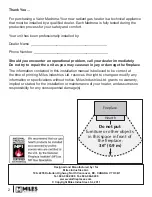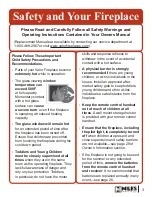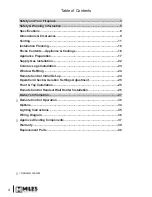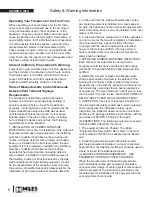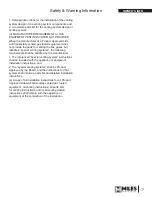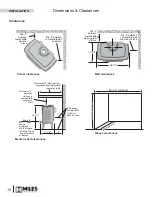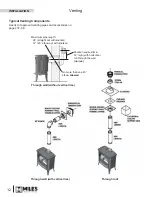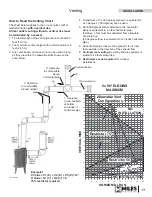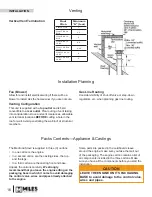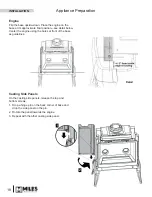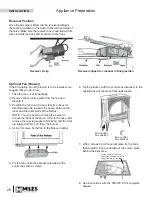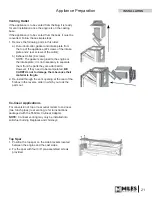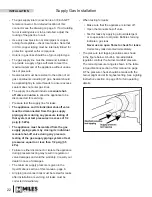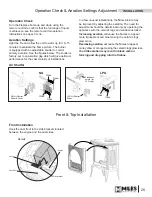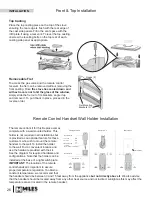
11
Venting
Top / Rear Outlet
This unit is shipped with a top outlet collar which is
fi
eld-convertible to rear outlet—see page 21 for details.
Vent Material
This unit is approved for installation using 4 by 6-5/8
inches co-axial direct vent pipe and accessories—see
list of approved venting pipes and accessories on
pages 37–38.
This unit may also be converted to co-linear (two 3
inches) venting (
rear vent only
) for use in solid-fuel
burning
fi
replaces and chimneys using adapters and
accessories—see list of approved venting pipes and
accessories on pages 37–38. Instructions for co-linear
conversion are packaged with the co-linear adapter.
Do not mix components from different vent
manufacturers, with the exception of Valor’s 551DVK
Horizontal Termination Kit which can be used in
combination with approved manufacturers’ venting
pipes listed on pages 37–38. Follow the installation
instructions supplied with the individual venting
components.
Wall Thickness
The appliance vent is suitable for penetrating a
combustible wall assembly up to 14 inches (36 cm)
in thickness. A non-combustible wall can be of any
thickness up to the maximum horizontal run of vent
pipe allowed for the particular installation.
10” (254 mm)
10” (254 mm)
Align the vent
center to the
center of the
frame
Important Installer Notice – Weather Sealing & Vapor
Barriers
It is the installer’s responsibility to ensure that vent installations through
exterior walls are caulked and weatherproofed in such a manner as to:
• Prevent rain water from entering the wall from the weather side by
adequately caulking the outer vent plate to the exterior wall surface.
• Prevent moisture inside the home from penetrating into the wall
structure by ensuring the inside wall plate is adequately sealed to
the inside vapor barrier.
• Prevent rain water and moisture from entering the walls by sealing
the joints between the outer vent tube and the inner and outer wall
plates.
We recommend the use of a high quality polyurethane sealant.
Framing Vent in Combustible
Walls & Ceilings
When penetrating through combustible walls and
ceilings, frame a minimum of 10 by 10 inches opening
to ensure that the insulation is kept clear of the vent
pipe. Also, seal all joints between the wall plates,
the wall and the vent pipe. Follow the installation
instructions supplied with the individual venting
components.
INSTALLATION


